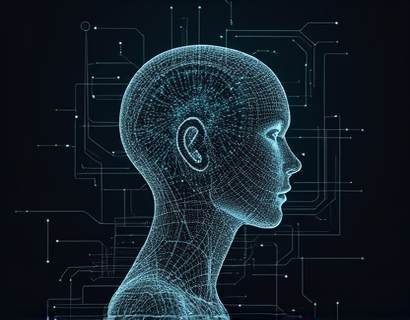Harnessing the Power of AI for Enhanced Educational Experiences
The integration of Artificial Intelligence (AI) in educational settings has opened new avenues for learning, making it more interactive, personalized, and safe. This article delves into the specialized role of AI chat interfaces in providing educational insights, particularly focusing on safe learning environments for both industry professionals and students. The aim is to explore how these AI-driven tools can offer verified information, cater to diverse learning needs, and ensure a secure platform for knowledge acquisition.
Understanding AI Chat Interfaces in Education
AI chat interfaces represent a significant leap forward in educational technology. These interfaces leverage natural language processing and machine learning to engage users in conversational interactions, providing tailored information and insights. For educational institutions and families seeking safe learning tools, AI chat interfaces offer a unique opportunity to access specialized knowledge about various subjects, including industry-specific topics.
The core functionality of these AI chats lies in their ability to understand and respond to user queries with accuracy and relevance. By continuously learning from interactions, these systems improve over time, ensuring that the information provided remains up-to-date and accurate. This dynamic learning capability is crucial in rapidly evolving fields such as technology, healthcare, and engineering, where staying informed is vital.
Ensuring Safety and Verification
One of the primary concerns in integrating AI into educational platforms is ensuring the safety and reliability of the content provided. Reputable systems implement rigorous content verification processes to guarantee that the information shared is accurate and trustworthy. This involves cross-referencing data from multiple credible sources and employing expert review to filter out any misinformation.
For educational institutions and families, this means that the AI chat interface can be a dependable source of information, free from harmful or inaccurate content. The verification process also extends to the chat's interactions, ensuring that responses are appropriate and safe for all users, including children and students.
Child-Friendly Features for Safe Learning
Recognizing the importance of safety in educational environments, especially for younger users, AI chat interfaces can be designed with child-friendly features. These features include simplified language, engaging visuals, and interactive elements that cater to the developmental stages of children. The chat can be programmed to understand and respond to queries at different complexity levels, making it accessible to users of various ages and learning abilities.
Moreover, the chat can be configured to adhere to strict privacy and data protection standards, ensuring that children's information is safeguarded. This not only provides peace of mind for parents and guardians but also complies with regulatory requirements such as the Children's Online Privacy Protection Act (COPPA).
Specialized Insights for Industry Learning
In the professional realm, AI chat interfaces can serve as valuable resources for industry-specific learning. Whether it's understanding the latest trends in technology, navigating regulatory changes in healthcare, or grasping complex engineering concepts, these chats can provide concise and detailed insights. The ability to interact with the chat in a conversational manner makes complex information more digestible and easier to retain.
For professionals seeking continuous education and skill enhancement, AI chats offer a flexible and convenient learning tool. The chat can provide case studies, best practices, and expert opinions, all verified for accuracy. This continuous access to specialized knowledge helps professionals stay competitive and informed in their respective fields.
Enhancing Educational Experiences through Personalization
One of the most significant advantages of AI chat interfaces in education is their ability to personalize learning experiences. By analyzing user interactions and preferences, the chat can tailor its responses to meet individual learning needs. This personalization extends to recommending relevant resources, suggesting topics for further exploration, and adapting the difficulty level of explanations based on the user's progress.
For students, this means a more engaging and effective learning journey. They can receive immediate feedback on their queries, explore topics in depth, and get support when needed. This level of personalization not only enhances the learning experience but also fosters a deeper understanding of the subject matter.
Promoting Collaborative Learning
AI chat interfaces can also facilitate collaborative learning environments. By connecting students and professionals with similar interests or learning goals, these chats can foster discussions and knowledge sharing. The chat can act as a moderator, guiding conversations and ensuring that the information exchanged is relevant and beneficial to all participants.
In educational institutions, this collaborative aspect can enhance group projects and peer learning. Students can use the chat to brainstorm ideas, solve problems together, and gain different perspectives on a topic. This collaborative approach not only enriches the learning experience but also develops essential teamwork and communication skills.
Supporting Diverse Learning Styles
Every learner has a unique style, whether they are visual, auditory, or kinesthetic learners. AI chat interfaces can accommodate these diverse learning preferences by providing content in various formats. For instance, the chat can offer text-based explanations, link to educational videos, or suggest interactive simulations to illustrate complex concepts.
This flexibility ensures that all users can engage with the material in a way that suits their learning style, thereby improving comprehension and retention. For educators, this means they can use the chat to complement their teaching methods, providing additional resources and support to cater to the needs of all students.
Continuous Improvement and Adaptation
The effectiveness of AI chat interfaces in educational settings is not static; it evolves through continuous improvement and adaptation. Feedback from users plays a crucial role in this process, as it helps identify areas for enhancement and ensures the chat remains relevant and useful. Educational institutions and developers can collect data on user interactions, analyze trends, and make informed updates to the chat's capabilities.
Additionally, staying abreast of the latest advancements in AI and educational technology is essential. By integrating new features and algorithms, the chat can offer even more accurate and insightful responses, further enriching the learning experience.
Building Trust Through Transparency
Trust is a fundamental component of any educational tool, and AI chat interfaces are no exception. Transparency in how the chat operates, the sources of its information, and the measures taken to ensure safety and accuracy is crucial. Providing users with clear explanations of the chat's capabilities and limitations helps build confidence in its use.
Educational institutions can enhance trust by openly communicating the benefits and functionalities of the AI chat to their community. Workshops, informational sessions, and detailed guides can help users understand how to effectively utilize the chat and what to expect from the interactions.
Conclusion
The integration of AI chat interfaces in educational settings represents a transformative approach to learning. By offering verified, personalized, and safe content, these tools can significantly enhance the educational experience for both students and professionals. As technology continues to advance, the potential for AI to support and enrich learning will only grow, making it an indispensable asset in the pursuit of knowledge.










































